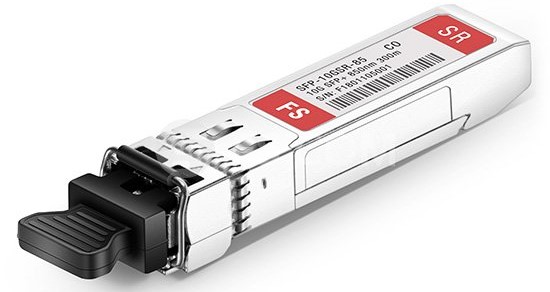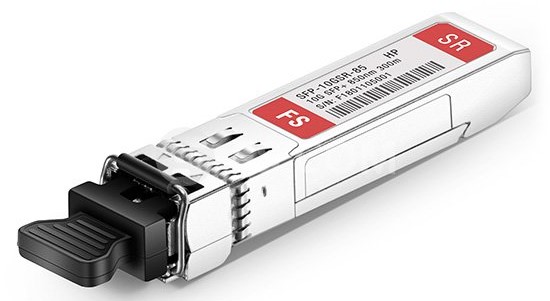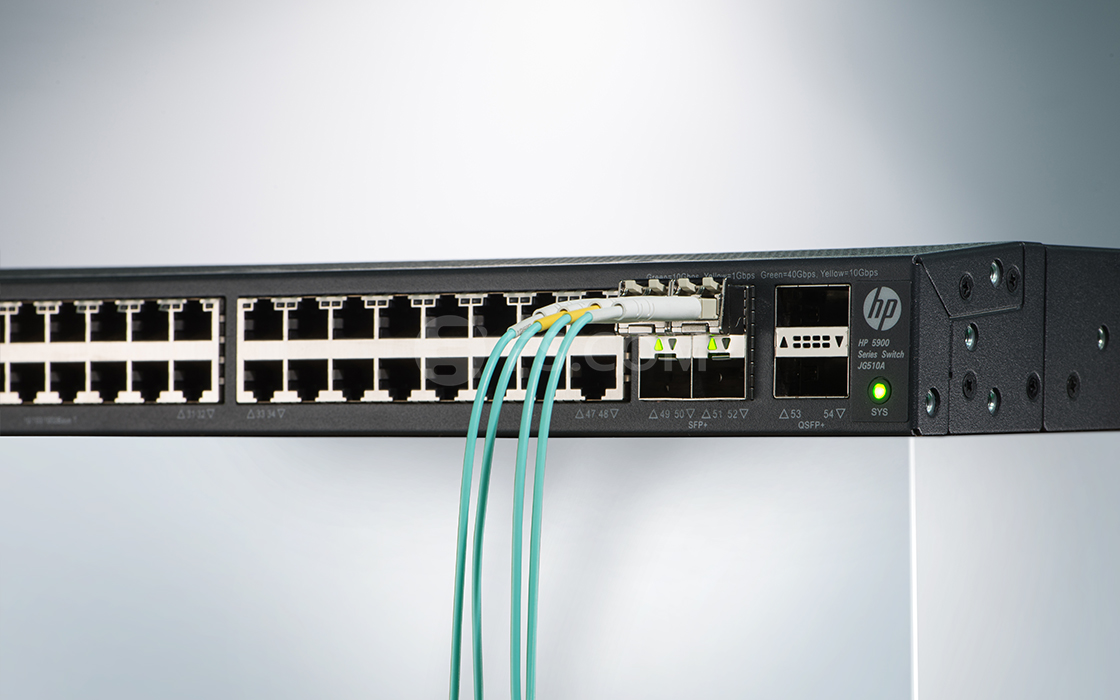Time has witnessed the history and development of optical transceivers over the years. As we can see, the modern transceiver modules are moving in the direction of hot-pluggable design, smaller size, lower cost, lower consumption and higher speed. To cater for the above needs, 10GBASE-SR SFP+ transceivers have been frequently used in data centers. So what’s the options for 10GBASE-SR SFP+ modules? This tutorial will introduce three popular types for you: E10GSFPSR, 455883 b21 and J9150A.
10GBASE-SR SFP+ Module
10GBASE-SR is a 10 Gigabit Ethernet port standard specified in IEEE 802.3 Clause 49 for multimode fiber. It adopts 850nm lasers, which have the advantages of low cost, low power consumption, small size, and high density. The letters “sr” refer to “short reach”, but the exact reach distance depends on the fiber types matched with transceivers. For instance, when used over OM1 fiber, the 10GBASE-SR has a maximum transmission length of 33 meters. However, nowadays 10GBASE-SR SFP+ is commonly connected with OM3 or OM4 fibers to reach up to respectively 300 or 400 meters. E10GSFPSR, 455883 b21 and J9150A are three popular 10GBASE-SR 300m SFP+ modules.
This table shows the detail information of the three popular 10GBASE-SR SFP+ modules.
| Form Type | SFP+ | Data Rate | 10.3125Gbps |
| Wavelength | 850nm | Max Distance | 300m over OM3 MMF |
| Interface | LC duplex | Laser | VCSEL |
| Fiber Type | MMF | DOM Support | Yes |
| TX Power | -7.3~-1dBm | Receiver Sensitivity | Below -11.1dBm |
| Temperature Range | -40~85°C (-40~185°F) | Protocols | MSA Compliant |
E10GSFPSR
E10GSFPSR is a 10GbE SR SFP+ transceiver type designed for Intel Ethernet 500 and 700 Series Network Adapters. It has a hot-pluggable SFP+ print and is built-in digital diagnostic functions. This 10GBASE-SR SFP+ optics has the installation benefits of small physical dimensions, less power consumption, tighter bend radius, lighter weight and longer reach distance compared to copper alternatives. FS.COM offers Intel E10GSFPSR compatible 10GBASE-SR and also LR for adapting different data centers.
Figure 1: This photo shows the Intel E10GSFPSR compatible 10GBASE-SR SFP+ 850nm 300m DOM transceiver module manufactured by FS.COM.
455883 B21
455883 b21 stands for HPE Blade System c-class 10GBASE-SR SFP+ module, which supports the 10 Gigabit SR standard. 455883 b21 10GBASE-SR transceiver module is in SFP+ form-factor specially for HPE blade switches and severs. It has the feature of low power consumption, under 0.8W. “HPE” refers to the brand name of Hewlett Packard Enterprise, which is the original equipment manufacture (OEM). The well-known brand superiority attracts customers to buy their expensive SFP+. However, FS.COM is a third-party vendor who can provide the exact same specifications and functions as the original 455883 b21 while offering a cost-effective price.
Figure 2: This photo shows the HPE Blade System 455883 b21 compatible 10GBASE-SR SFP+ 850nm 300m DOM transceiver module manufactured by FS.COM.
J9150A
J9150A is a SKU code compatible for HPE X132 10G SFP + LC SR transceiver module, which is consistent with the 10 Gigabit SR standard in SFP+ form-factor. It is typically applied to some HPE Aruba switch series rather than HPE blade servers. However, the high compatible option of J9150A allows it to be used on blade switches too. HPE J9150A compatible 10GBASE-SR SFP+ is a compatible transceiver module produced by FS.COM under strict quality system verification. Meanwhile, it is supported on a wide range of HPE equipment and commonly used in data and optical networks.
Figure 3: This is a demonstration of FS.COM J9150A fits into HP 5900 Series Switch (JG510A).
To sum up, E10GSFPSR, 455883 B21 and J9150A are three most popular 10GBASE-SR SFP+ modules sharing much commons in manufacturing specifications and functional performance, such as 850nm wavelength, 10GbE data rate, 300m short reach and low consumption for using VCSEL lasers. However, they are different from original vendor brands and matched equipment.
Table below shows the detail information.
| Type | Brand | Supportability | Matched Equipment |
| E10GSFPSR | Intel | A wide range of Intel equipment | Intel Ethernet 500 and 700 Series Network Adapters |
| 455883 B21 | HPE | A wide range of HPE equipment | HPE Blade switches and severs |
| J9150A | HPE | A wide range of HPE equipment | Some HPE Aruba Switch Series |
Conclusion
This article introduced three popular 10GBASE-SR SFP+ modules: E10GSFPSR, 455883 b21 and J9150A. First illustrated their general characteristics as 10GBASE-SR SFP+ modules. Then explained each one respectively. People choose what to use according to exact matched equipment and their personal requirements.



